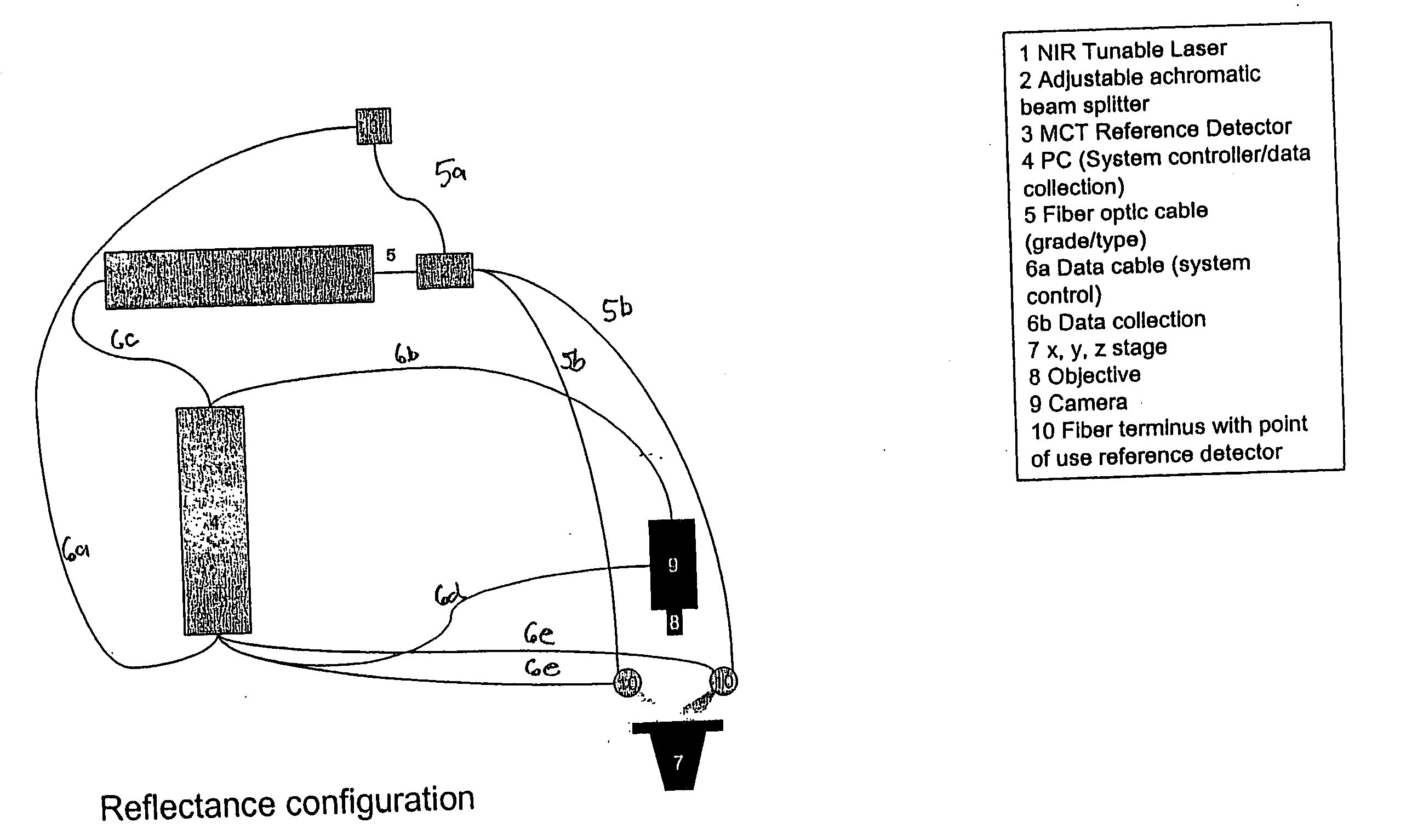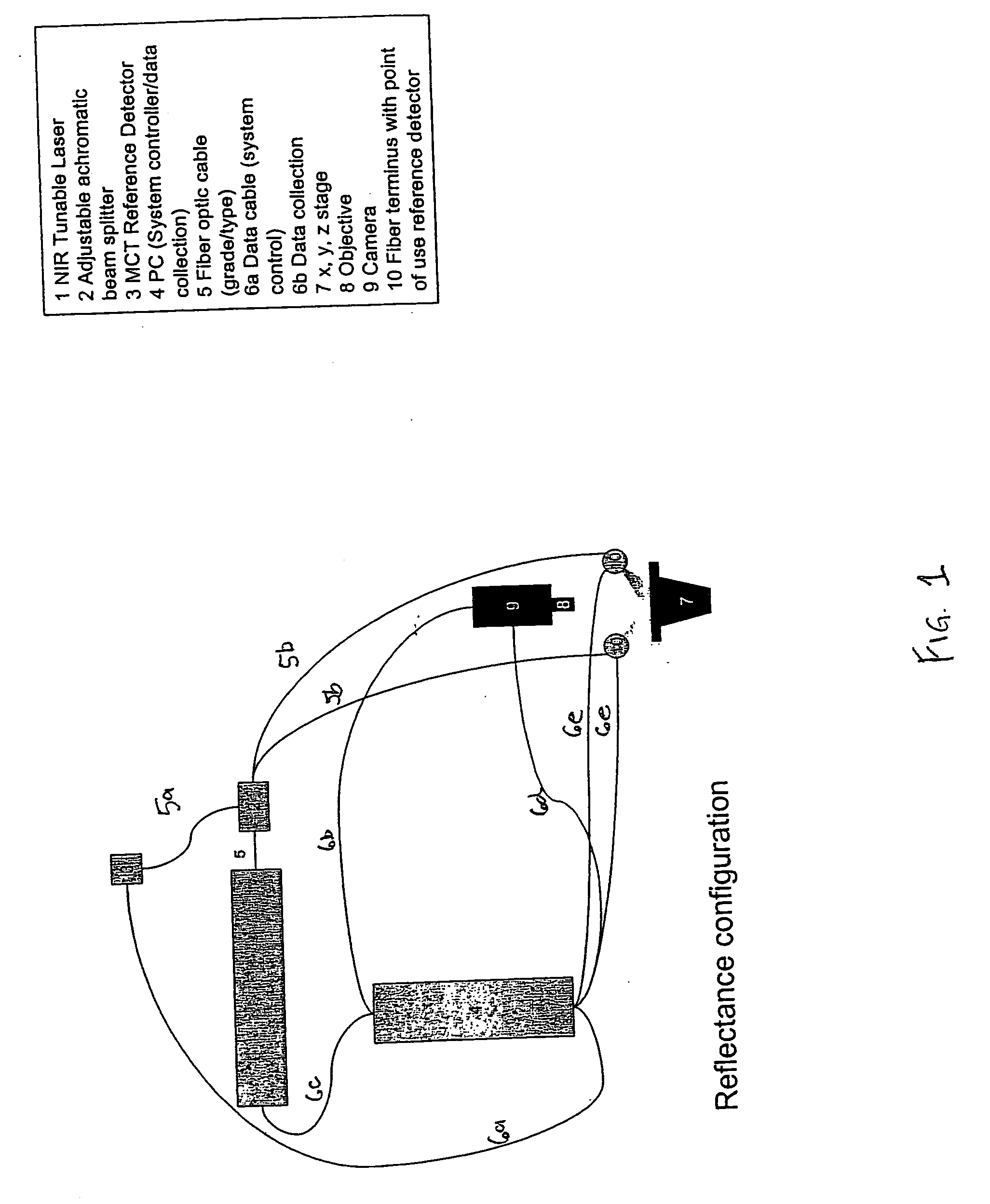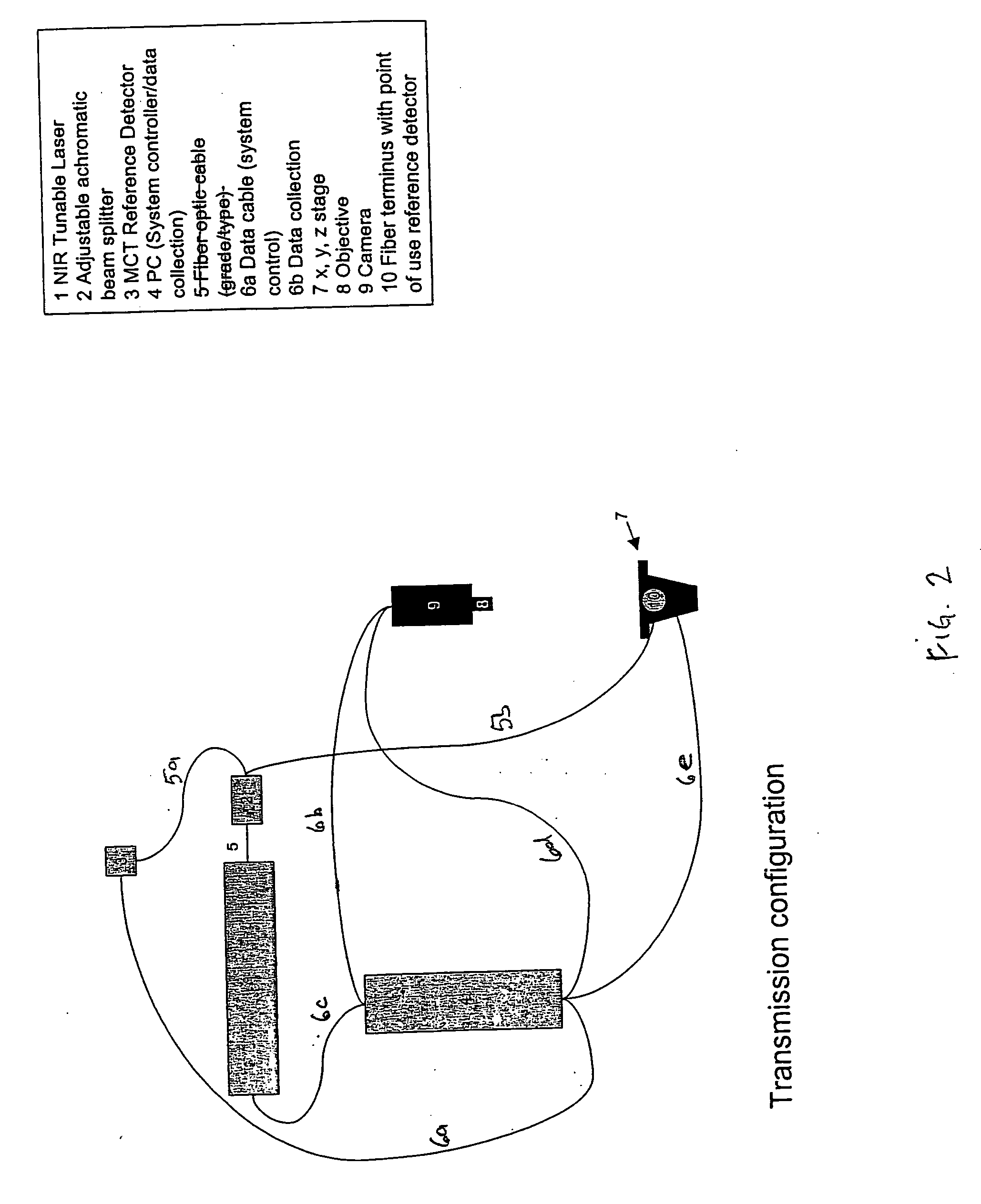Tunable laser-based process monitoring apparatus
a laser-based process monitoring and laser-based technology, applied in the field of chemical sampling, can solve the problems of time-consuming and cumbersome methods, broadband source illumination and inefficient light collection, and affect the signal-to-noise ratio of the imager, so as to achieve easy retrofit and easy operation.
- Summary
- Abstract
- Description
- Claims
- Application Information
AI Technical Summary
Benefits of technology
Problems solved by technology
Method used
Image
Examples
Embodiment Construction
[0013] The preferred embodiment of the invention is shown in schematic representation in FIG. 1. Reference No. 1 is a tunable illumination source, preferably a near infrared (wavelengths approximately 700 to 2500 nm) tunable laser of a type such as that made by Opotek Corporation of Carlsbad, Calif. In an alternate embodiment, the tunable laser can be replaced with a tunable illumination source capable of providing illumination over a broader range of wavelengths, including visible and ultraviolet illumination. Preferably, the tunable laser is able to be tuned to individual wavelengths with a resolution of 10 cm−1, with a tuning resolution that is adjustable depending on the analytical need, and is not less than 5 cm−1. Preferably, tunable laser 1 can be tuned via a computer controlled interface.
[0014] Fiber optic cable 5 delivers the output of tunable laser 1 to a beam splitter 2. Beam splitter 2 is preferably a polarizing beam splitter of the type sold by Control Optics of Ontari...
PUM
| Property | Measurement | Unit |
|---|---|---|
| wavelengths | aaaaa | aaaaa |
| wavelength | aaaaa | aaaaa |
| specific wavelength | aaaaa | aaaaa |
Abstract
Description
Claims
Application Information
 Login to View More
Login to View More - R&D
- Intellectual Property
- Life Sciences
- Materials
- Tech Scout
- Unparalleled Data Quality
- Higher Quality Content
- 60% Fewer Hallucinations
Browse by: Latest US Patents, China's latest patents, Technical Efficacy Thesaurus, Application Domain, Technology Topic, Popular Technical Reports.
© 2025 PatSnap. All rights reserved.Legal|Privacy policy|Modern Slavery Act Transparency Statement|Sitemap|About US| Contact US: help@patsnap.com



